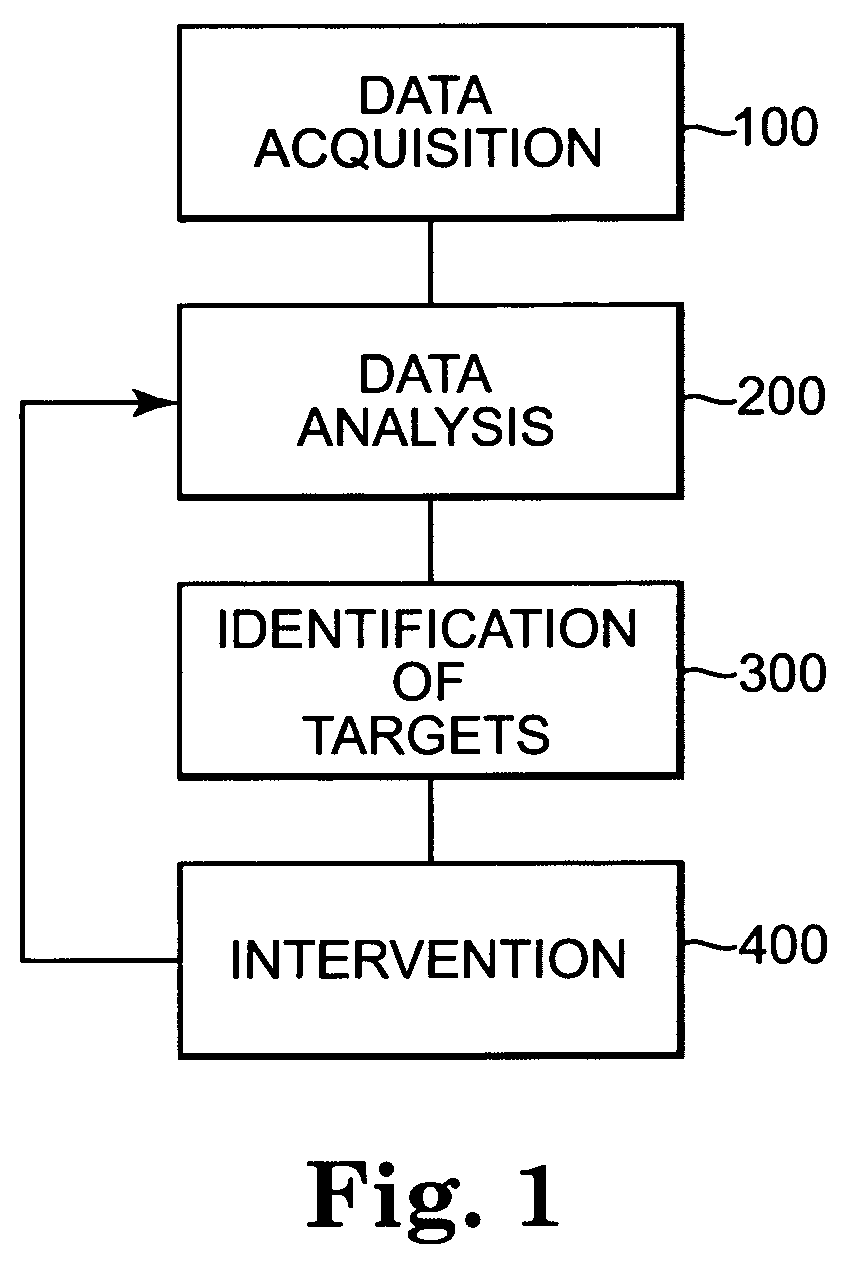Method and computer program product for predicting and minimizing future behavioral health-related hospital admissions
a technology for behavioral health and hospital admissions, applied in the field of future behavioral health-related hospital admissions prediction and computer program products, can solve the problems of meek then generating a risk level for that patient, subjective data is simply not reliable, and hospitalized patients incur approximately 50% of the overall total cost of behavioral health professional and facility services, so as to facilitate proactive intervention
- Summary
- Abstract
- Description
- Claims
- Application Information
AI Technical Summary
Benefits of technology
Problems solved by technology
Method used
Image
Examples
Embodiment Construction
[0029]While the invention is amenable to various modifications and alternative forms, specifics thereof are shown by way of example in the drawings and described in detail herein. It should be understood, however, that the intention is not to limit the invention to the particular embodiments described. On the contrary, the intention is to cover all modifications, equivalents, and alternatives falling within the spirit and scope of the invention.
[0030]With reference to the Figures, a method, system and computer program product for identifying patients / members with a high risk of future hospital admission and subsequently managing those identified as a high risk to reduce the probability of hospital admission is described.
[0031]Specifically with reference to FIG. 1, one embodiment of the invention may comprise several modules. The first may be a data acquisition module 100. This module comprises generally the acquisition of patient and / or member data relating to any variable that may ...
PUM
 Login to View More
Login to View More Abstract
Description
Claims
Application Information
 Login to View More
Login to View More - R&D
- Intellectual Property
- Life Sciences
- Materials
- Tech Scout
- Unparalleled Data Quality
- Higher Quality Content
- 60% Fewer Hallucinations
Browse by: Latest US Patents, China's latest patents, Technical Efficacy Thesaurus, Application Domain, Technology Topic, Popular Technical Reports.
© 2025 PatSnap. All rights reserved.Legal|Privacy policy|Modern Slavery Act Transparency Statement|Sitemap|About US| Contact US: help@patsnap.com



